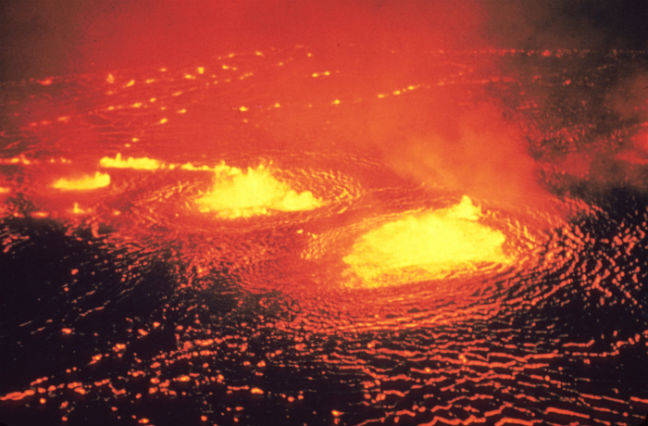US National Parks To Be Smothered Under Blanket Of Liquid-hot Magma. Yes, The Open-source 5G Software

AccessParks, broadband provider to the US National Park Service, has signed up FreedomFi to deploy 5G networking over hundreds of sites using Magma open source 5G software.
The deal is a multi-year affair and the network itself will use the Citizens Broadband Radio Service (CBRS) to punt a 5G service required by AccessParks.
Boris Renski, known for Kubernetes cloud-botherers Mirantis and now FreedomFi, spoke to us last year about the company's focus on 5G-based "private LTE" campus networks, and scoring a contract to roll 5G out over hundreds of sites is certainly quite some campus.
Renski told The Register that for this contract FreedomFi had seen off competition from proprietary software alternatives and kit from radio hardware vendors as well as open-source Magma alternatives.
The latter is interesting since Magma, an open-source cellular and network software stack, lurks at the heart of what a lot of FreedomFi does. The company is a contributor to the project and has its own Magma distribution. The use of the platform also makes thing relatively vendor agnostic and free from lock-in.
"The hardware that gets deployed is commodity small cells from a variety of hardware vendors – mainly Airspan, Telrad and Baicells – and FreedomFi gateways (which run Magma open-source software inside)," Renski told us.
Kit is placed in commonly visited locations that already have power and some form of connectivity (such as cafeterias or ranger stations) and radiate that signal. "These deployments won't cover 100 per cent of park area," Renski added, "but will cover the vast majority of locations trafficked by visitors."
The plan is for the millions of tourists visiting national and state park locations every year to be served by the network. The architecture of Magma also lends itself to the network having roaming agreements with mobile network operators (virtual or otherwise) as well as emergency connectivity.
In a change from the usually lethargic progress of 5G, the project kicked off two months ago and the technology is up and running at nine locations, including the South Rim of the Grand Canyon. Hundreds more "highly trafficked" tourist locations are due to be covered by the end of 2021 as AccessParks makes good on its own contract to deploy 5G to over 200 California state parks.
Tim Rout, CEO at AccessParks, said: "Magma has the most momentum out of all open-source alternatives and it's access agnostic architecture enables us to take advantage of the radio innovation from a variety of vendors and to stay in control of our destiny."
And why FreedomFi? Renski told us: "We'd like to believe it's because of Magma's strong open-source community momentum, agnosticism to vendor hardware and quality of our support." ®
From Chip War To Cloud War: The Next Frontier In Global Tech Competition
The global chip war, characterized by intense competition among nations and corporations for supremacy in semiconductor ... Read more
The High Stakes Of Tech Regulation: Security Risks And Market Dynamics
The influence of tech giants in the global economy continues to grow, raising crucial questions about how to balance sec... Read more
The Tyranny Of Instagram Interiors: Why It's Time To Break Free From Algorithm-Driven Aesthetics
Instagram has become a dominant force in shaping interior design trends, offering a seemingly endless stream of inspirat... Read more
The Data Crunch In AI: Strategies For Sustainability
Exploring solutions to the imminent exhaustion of internet data for AI training.As the artificial intelligence (AI) indu... Read more
Google Abandons Four-Year Effort To Remove Cookies From Chrome Browser
After four years of dedicated effort, Google has decided to abandon its plan to remove third-party cookies from its Chro... Read more
LinkedIn Embraces AI And Gamification To Drive User Engagement And Revenue
In an effort to tackle slowing revenue growth and enhance user engagement, LinkedIn is turning to artificial intelligenc... Read more

